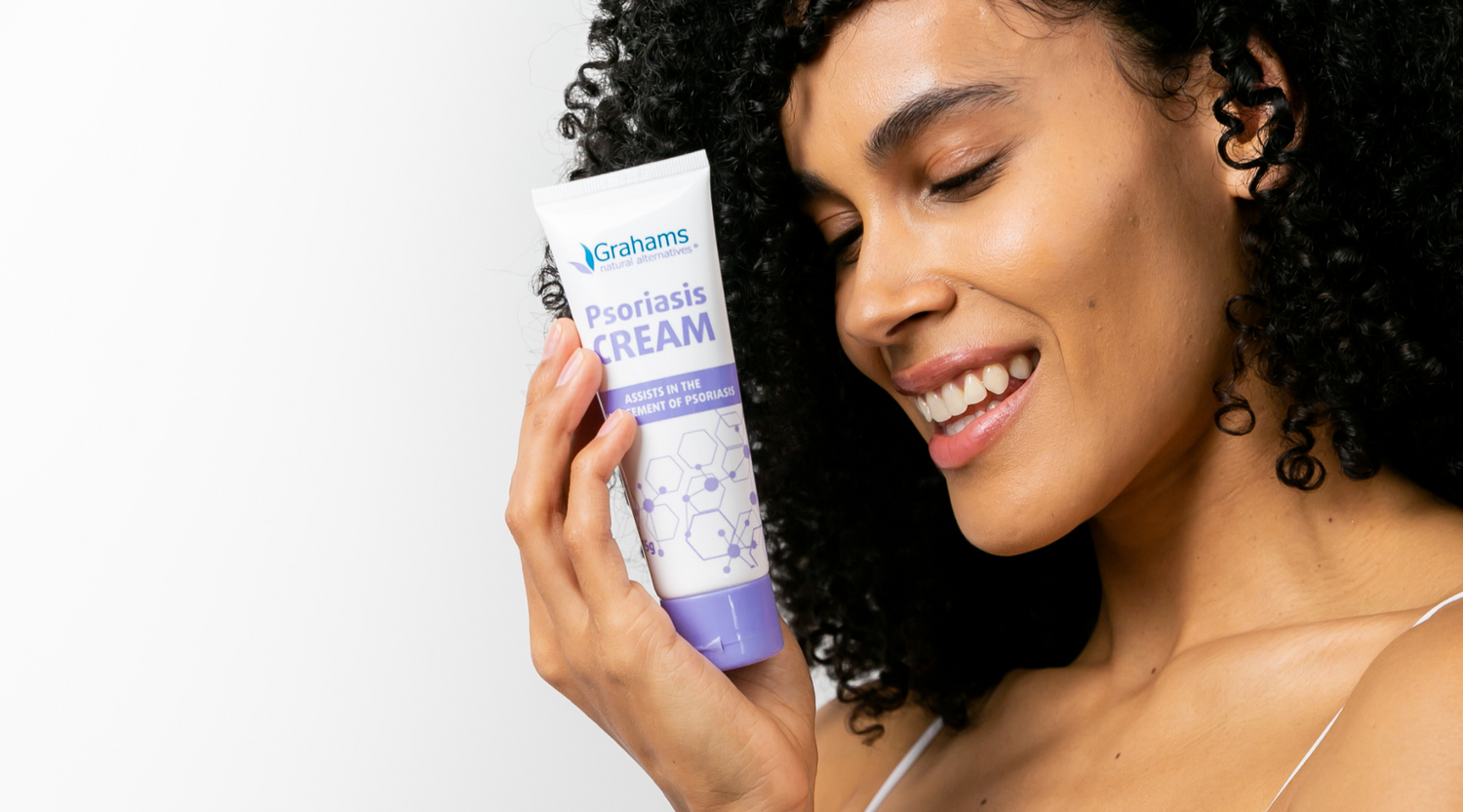Living with a chronic skin condition like dyshidrotic eczema can be challenging and distressing. The persistent itchiness, painful blisters and red, inflamed skin can greatly impact one's quality of life. In this blog, we will delve into the world of dyshidrotic eczema, exploring its causes, symptoms, triggers, how it can affect day-to-day activities, as well as some effective management strategies.
What is Dyshidrotic Eczema?
Dyshidrotic eczema, also known as dyshidrosis or pompholyx, is a common form of eczema that primarily affects the hands and feet. It is characterized by small, intensely itchy blisters that typically occur on the sides of the fingers, palms, soles of the feet and sometimes the toes. These blisters may be filled with clear fluid and can cause pain, redness and swelling. The condition is chronic and tends to recur periodically.
Who is most likely to get Dyshidrotic Eczema?:
Dyshidrotic eczema can affect people of all ages, but it is most commonly seen in adults between the ages of 20 and 40. Women are slightly more prone to developing this condition than men. Individuals with a personal or family history of eczema, allergies or asthma are also at an increased risk of developing dyshidrotic eczema.
What does it look like and how to identify it?:
The characteristic appearance of dyshidrotic eczema makes it relatively easy to recognize. The condition typically begins with the sudden appearance of small, fluid-filled blisters on the palms, sides of the fingers, or soles of the feet. The blisters may be accompanied by redness, swelling, and intense itching. Over time, the blisters may burst, ooze fluid, and form crusts. In some cases, the skin may become dry, cracked, and scaly.
Symptoms of Dyshidrotic Eczema:
Apart from the blistering and itching, individuals with dyshidrotic eczema may experience the following symptoms:
1) Intense itching: The affected skin can become incredibly itchy, leading to constant scratching and discomfort.
2) Pain and tenderness: Blisters and cracked skin can cause pain, especially when performing certain activities or coming into contact with irritants.
3) Redness and swelling: Inflamed skin is a common symptom, making the affected areas appear red and swollen.
4) Skin dryness and scaling: As the condition progresses, the skin may become dry, scaly and prone to cracking.
Common Triggers for Dyshidrotic Eczema:
Understanding the triggers that can worsen dyshidrotic eczema is essential for effective management. While triggers can vary from person to person, some common ones include:
a) Stress: Emotional stress can trigger or exacerbate eczema flare-ups.
b) Allergens: Contact with substances like nickel, certain types of metal, latex or certain fragrances may trigger dyshidrotic eczema.
c) Irritants: Exposure to certain chemicals, detergents, soaps or solvents can irritate the skin and trigger a flare-up.
d) Sweating: Excessive sweating, especially in warm and humid environments, can aggravate dyshidrotic eczema.
e) Certain foods: While food triggers may vary from person to person, some common culprits include dairy products, gluten, citrus fruits, tomatoes, eggs and spicy foods. It's important to identify individual food triggers through a process of elimination and personal observation.
The impacts of living with Dyshidrotic Eczema:
Living with dyshidrotic eczema can significantly impact day-to-day activities, both physically and emotionally. The symptoms, such as itching, pain and discomfort, can make it challenging to perform simple tasks, such as washing dishes, typing on a keyboard or gripping objects. The appearance of blisters and red, inflamed skin may also cause self-consciousness and social anxiety. Additionally, sleep disturbances due to itching and discomfort can lead to fatigue and reduced productivity.
How to Treat Dyshidrotic Eczema?
When it comes to managing dyshidrotic eczema, following a consistent routine is essential. A carefully curated skincare regimen can help alleviate symptoms, reduce inflammation and promote healing. By incorporating specific Grahams Natural products, you can effectively treat dyshidrotic eczema and provide relief from its uncomfortable symptoms.
Step 1) Intensive Therapy Body Wash:
Start your treatment routine in the shower with Grahams Intensive Therapy Body Wash. This gentle cleansing body wash is specially formulated for sensitive skin and is free from harsh chemicals and irritants. The body wash helps cleanse the skin without stripping away its natural moisture. By using this body wash, you can minimize further irritation and maintain the skin's natural barrier.
Step 2) Body & Bath Oil:
After showering, as soon as you step out of the shower, it's important to lock in moisture and nourish your skin. Apply Grahams Body & Bath Oil directly to the affected areas of your skin. This oil is enriched with natural ingredients that provide intense hydration and nourishment. It helps replenish the skin's moisture barrier and soothe irritated skin. The gentle formula absorbs quickly, leaving your skin feeling soft and smooth.
Step 3 ) C+ Eczema & Dermatitis Cream:
Following the application of the body and bath oil, apply the Grahams Natural C+ Cream to the affected areas. This cream is specifically designed to relieve the symptoms of eczema, including dyshidrotic eczema. With a combination of soothing and nourishing properties, the cream helps reduce inflammation, facilitate rehydration of the skin's layers and alleviate redness and itching. Regular application throughout the day, as often as required, will keep your skin hydrated and provide ongoing relief.
Step 4 ) Mega Oil:
In addition to external care, it's important to address internal factors that can contribute to skin disorders. Grahams Mega Oil is an internal oil designed to treat gut issues that can be associated with skin disorders and overall health issues. This oil contains a blend of natural ingredients, including omega-3 fatty acids and other essential nutrients, to support gut health and overall well-being. By improving gut health, you may see improvements in your skin condition, including dyshidrotic eczema.
By incorporating the Grahams Intensive Therapy Body Wash, Grahams Body & Bath Oil, Grahams Natural C+ Cream, and Grahams Mega Oil into your daily routine, you can effectively treat and manage dyshidrotic eczema. These products work synergistically to provide intense hydration, soothe irritated skin, address gut health and support the healing process. With consistent use, you can experience reduced inflammation, improved skin health and relief from itching and discomfort.
TIP: For those experiencing hot, oozing and inflamed eczema, you may also consider using Grahams Eczema Gel. This gel is specifically formulated to provide cooling relief for hot and inflamed skin. For an extra cooling effect, you can keep the gel refrigerated.
Tips for Managing Dyshidrotic Eczema
Managing dyshidrotic eczema requires a comprehensive approach that combines skincare, lifestyle adjustments, and self-care practices. Here are some useful tips to help you effectively manage your condition and reduce the frequency and severity of flare-ups:
1) Avoid Triggers: Identify and avoid triggers that worsen your dyshidrotic eczema. These triggers can vary from person to person but may include certain allergens, irritants, stress and sweating. Keep a diary to track potential triggers and make necessary lifestyle modifications to minimize exposure.
2) Practice Good Hand Hygiene: Cleanse your hands with gentle, fragrance-free soaps and lukewarm water. Avoid hot water and harsh soaps that can strip away the natural oils from your skin. Pat your hands dry gently with a soft towel, and moisturize immediately afterward.
3) Protect Your Hands: Wear protective gloves when engaging in activities that may irritate your skin, such as washing dishes or cleaning. Opt for cotton-lined gloves to prevent excessive sweating and irritation. Avoid wearing tight-fitting gloves for extended periods, as they can restrict airflow and exacerbate symptoms.
4) Manage Stress: Stress can trigger or worsen dyshidrotic eczema flare-ups. Incorporate stress management techniques into your daily routine, such as deep breathing exercises, meditation, yoga, or engaging in activities you enjoy. Find healthy outlets to relieve stress and promote emotional well-being.
5) Dietary Modifications: While the impact of diet on dyshidrotic eczema varies among individuals, some people may find that certain foods can trigger flare-ups. Consider maintaining a food diary to track your diet and identify potential trigger foods. Consult with a healthcare professional or a registered dietitian to explore dietary modifications that may help manage your condition.
6) Practice Mindful Scratching: Itching can be overwhelming, but excessive scratching can worsen the condition and lead to skin damage and infection. Practice mindful scratching by gently patting or tapping the itchy areas instead of vigorously scratching. Keep your nails short to minimize potential skin damage.
Remember, dyshidrotic eczema can vary from person to person, and what works for one individual may not work for another. It is crucial to find a management plan that suits your unique needs and to stay consistent with your routine. By implementing these tips and following a holistic approach, you can take control of your dyshidrotic eczema and improve your skin health and overall well-being.





